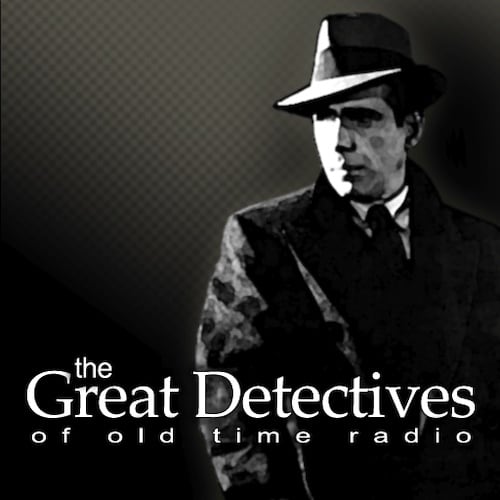Volume 5 of the Radio Archives Great Gildersleeve (the third featuring Harold Peary) collection brings us near to the conclusion of the first season of The Great Gildersleeve. While it might have been nice for the set to conclude that season, The Great Gildersleeve produced 44 episodes. Even with the few missing episodes, that’s a lot of material to get through, and even three twelve-episode sets hasn’t been enough. There are two more season 1 episodes in Volume 6.
The series was initially conceived and launched prior to Pearl Harbor, but at this point, it was firmly on a war footing, and reflects many elements that became part of everyone’s lives for the duration. There is an episode on a Victory Garden that Gildersleeve, Judge Hooker, and Leroy plant together. There is also a Victory Ship christening that Gildersleeve and his family have to find some way to get to. Gildersleeve’s niece Marjorie volunteers to write to soldiers overseas and gets so overwhelmed with requests that it gets outsourced to the rest of the family, writing in her name. The shortage of rubber and the need to carpool with gasoline rationing comes into play more than once. These little glimpses at life during the War adds a good deal of historic insight to the comedy.
However, it’s not all war for Gildersleeve and family. There’s an attempt made to introduce recurring characters in the form of new next-door neighbors. While I think the episode where the neighbors are introduced is pretty funny, as Leroy ends up getting Gildersleeve committed to a fistfight, the only recurring character is the hyper daughter of the house, which is hardly a unique character idea.
Gildersleeve’s frenemy relationship with Judge Hooker takes a couple of interesting turns. First, to counterprogram Hooker’s well-received radio lectures, Gildersleeve creates an alternate persona as a mystery radio singer who gets a timeslot opposite Hooker on another station and steals Hooker’s audience. This serves to introduce the element of Harold Perry lending his solid singing voice to the program, which would become a more prominent part of the program and lead to his departure in 1950. Later in the series, Hooker gives Gildersleeve a spare tire inner tube, leading Gildersleeve to organize a tribute dinner. Given that Gildersleeve is organizing it, it proves the adage that no good deed goes unpunished, as Gildersleeve nearly wrecks Hooker’s reputation in the process.
Probably the best episode in this set is “Gildersleeve’s Goat, Horace.” A stray goat adopts Gildersleeve and his family and turns their world upside down, as the goat becomes a menace to the community. I have to give high marks to the production team for the great job they did in this season creating stories around animals using some solid sound effects skills.
If the series has one thing that got repetitive, it is the number of stories that involved con men. Three different episodes in this set feature con men trying to fleece Summerfield’s residents. It’s particularly noticeable that the first two episodes in the set (which were separated when they aired by another, lost, episode) were both about con-men-related stories. Of course, coming up with fresh ideas every week is a challenge when you have to turn out forty-four straight weeks of programs.
Overall, this set is a lot of fun while also being insightful. Listeners who don’t mind too much about flaws related to the the era or the challenge of putting out 44 weeks of programming will enjoy it even more.
Rating: 4.25 out of 5
